Austrians protest government spending with concrete model city
A team of Austrian students installed a model city in the centre of Vienna to show how much housing and infrastructure could be built with the €19 billion (£15 billion) that the government is paying to bail out a local bank (+ slideshow).
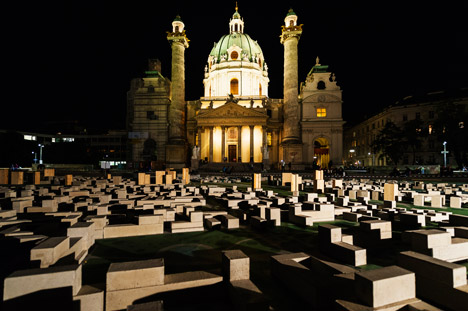
Students from architecture, civil engineering, spatial planning and computer science courses at the Technical University of Vienna initiated the Milliardenstadt project to illustrate the Austrian government's spending of taxpayers' money.
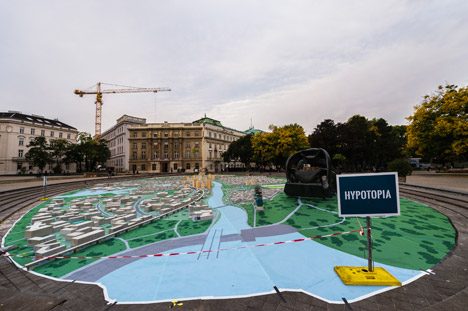
The government bought the Hypo Alpe Adria bank in 2009 following a series of financial scandals that led to its bankruptcy, and has already spent over €5 billion (£3.9 billion) paying off its debts. Further spending to rescue the bank was projected to amount up to €14 billion (£11.1 billion) at the time the Milliardenstadt project began.
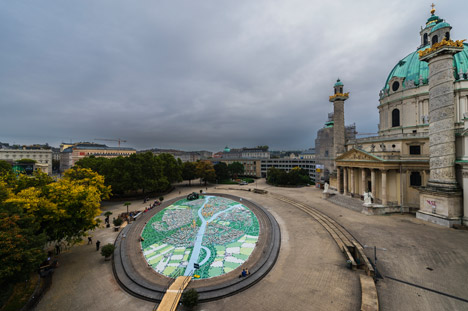
Two students, Lukas Zeilbauer and Diana Contiu, decided that the public weren't doing enough to voice concerns over the government's spending.
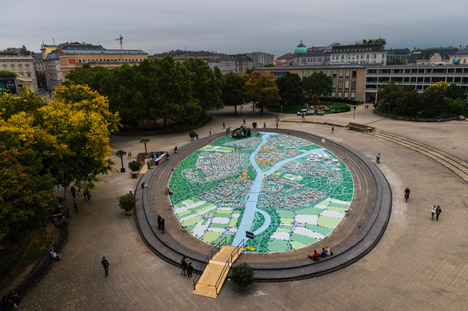
"Me and my girlfriend Diana were shocked, that there was no big demonstrations or many signatures on the petition," Zeilbauer told Dezeen. "We wanted to create a comprehensive scale for such an inconceivable amount of money."
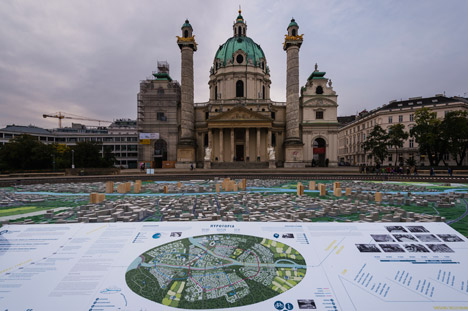
Their team calculated how many single-family houses could be built with the money, then planned and built a 1:100-scale city in Vienna's Karlsplatz square, to help members of the public visualise the government's spending.
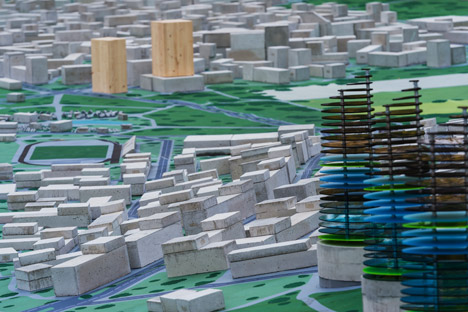
"You can build over 70,000 houses with €19 billion," said Zeilbauer. "So the main idea was born: to build an entire city with housing and infrastructure for over 100,000 people!"
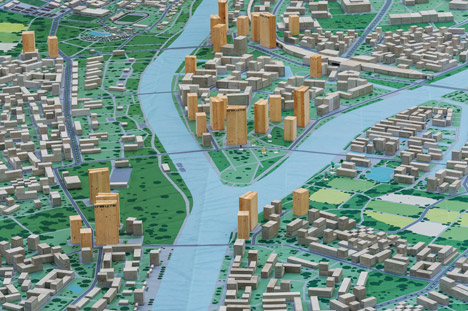
Called Hypotopia – a combination of the bank's name and the idea of a utopian urban centre – the city was set out by its designers as an energy-efficient, car-free society.
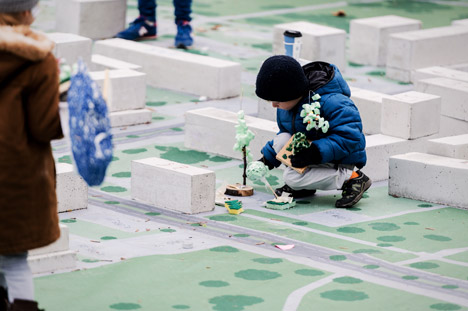
Imagined as a home for 102,574 residents, the city would be Austria's sixth largest – containing shops, power plants, and garbage disposal facilities, but no banks.
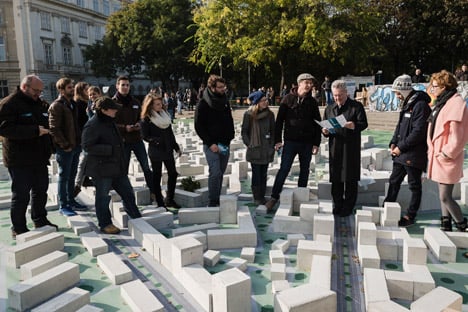
Buildings were represented by concrete blocks, laid out onto an urban grid of roads and green spaces painted onto a base made from wooden boards.
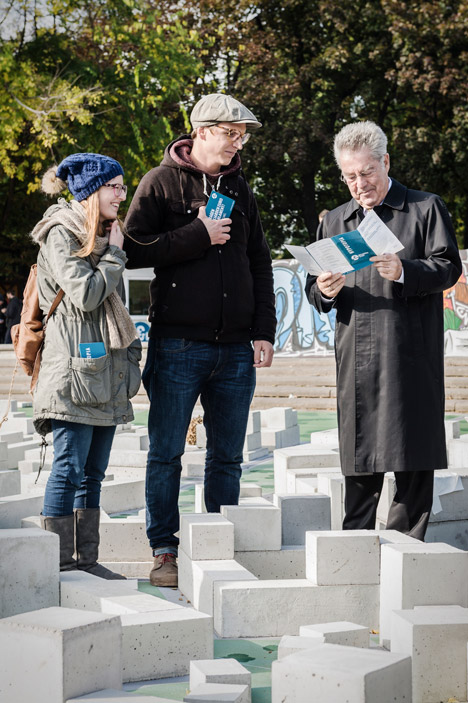
"We just got materials from companies and a place to build the model out of wood and concrete for free," said Zeilbauer, who enlisted family, friends, students and volunteers to help with construction.
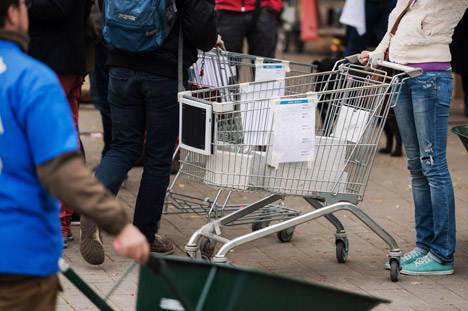
The installation remained in place for 19 days, before protesters marched the concrete blocks – by carrying or transporting them in wheelbarrows and shopping trolleys – to the city's parliament building, where they deposited more than 25 tonnes of concrete.
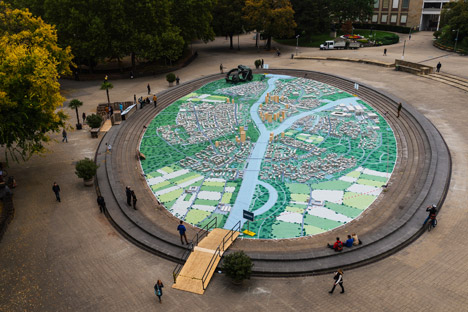
"Our main goal with the Milliardenstadt project is to make this incredibly big amount of money understandable, tangible and visible for everyone," Zeilbauer explained.

Photography is by Armin Walcher.